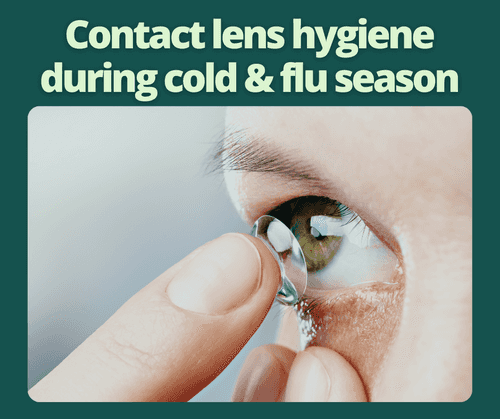Common Eye Conditions Explained
A lot of people associate their trip to the opticians with updating their prescription and getting new glasses or contact lenses, but it is so much more than that.

At an eye examination our Optometrists will also assess the health of your eyes, looking for any changes in your eye that may show the development of conditions that can impact your eye health and vision.
Many of these conditions you may have heard of, but you might not know how they can affect your eye health or the signs to look out for. Some of these conditions have few to no symptoms which is why regular examinations are so important.
Age-related Macular Degeneration - AMD is the most common cause of sight loss in the UK affecting older people. The condition affects the central part of your vision caused by damage to the macular region of the eye.
Cataracts – A cataract is when the lens in your eye becomes cloudy, this can happen to all the lens or just part of it. It can cause your vision to become less clear and foggy, and you may notice car headlights are more dazzling and objects may appear less colourful.
Diabetic Retinopathy – If you are diabetic, you are at risk of developing diabetic retinopathy. This is a complication of diabetes that damages the retina – the light sensitive layer at the back of the eye. Diabetes can cause the blood vessels to become blocked or leak, causing the retina to stop working properly because it isn’t receiving a good supply of blood. If left undiagnosed and untreated, this can lead to complications resulting in loss of vision.
Dry Eye Syndrome – Dry eye is a common condition which affects 1 in 4 people in the UK. People who have dry eye either don’t make enough tears or their tears are poor quality resulting in eyes that are dry and irritated. As a result, your eyes can be dry and uncomfortable, which causes the eye to produce watery tears.
Flashes and Floaters – Flashes can occur when the jelly inside your eye shrinks a little, tugging on your retina. Floaters can appear as spots, lines or cobwebs and are caused by cells clumping together in the clear jelly part of your eye, casting shadows on your retina. If new floaters appear, or floaters along with flashes or a ‘curtain’ across your vision you should take immediate action.
Glaucoma – Glaucoma is a group of eye conditions where the optic nerve is damaged. It is often linked with raised blood pressure, although sometimes the eye pressure can be normal. When the optic nerve is damaged it can cause problems with the peripheral vision and if left untreated can cause permanent damage.
Myopia – Myopia, also known as short-sightedness, affects 1 in 3 people in the UK and is estimated to increase dramatically by 2050. Myopia occurs when the eye is too long, making the distance between the cornea and retina too far causing blurred vision. People with high myopic prescriptions are at risk of developing other eye conditions later in life.
The best way to keep an eye on your eye health is with regular eye examinations. At each eye exam our optometrists will collect important data to monitor the health of your eyes and diagnose conditions in their earliest stages.
If you have noticed any changes in your vision it is important to contact your local Derbyshire Opticians for further advice.




